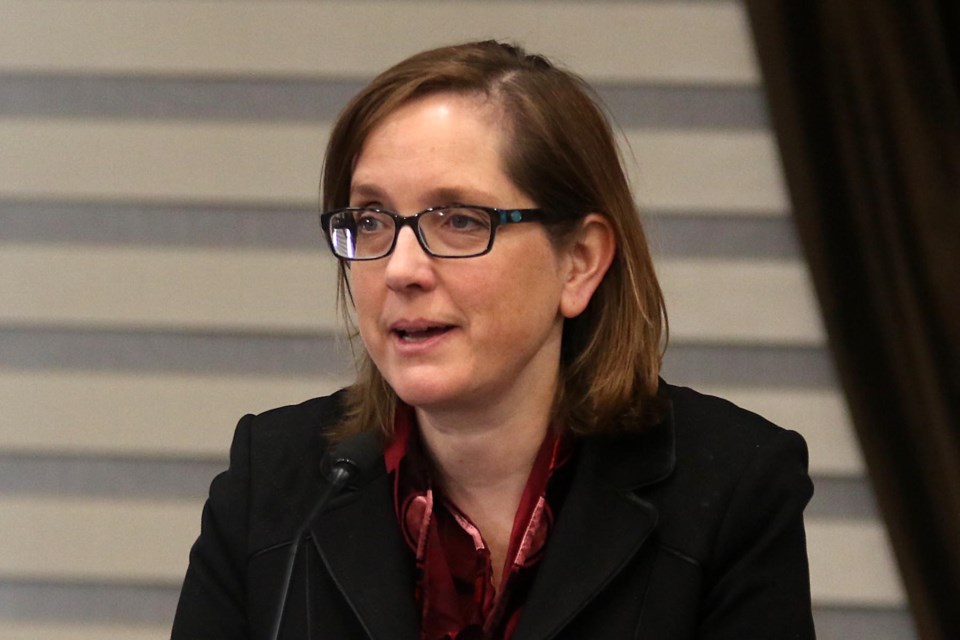THUNDER BAY – The continued spread of COVID-19 in Thunder Bay makes it likely the province will consider moving the district into the orange zone of its COVID-19 Response Framework, says medical officer of health Dr. Janet DeMille.
The move would tighten rules slightly for facilities like bars and restaurants, but would leave most restrictions in place under the current yellow zone, such as limits on gatherings, unchanged.
“I think when you look at it from a numbers point of view, our indicators could very well be in the orange level,” DeMille said Monday. “They were in that level last week, but things were getting better. Recent events may have stalled that improvement.”
There were 93 active cases in the district as of Monday, with 75 new cases announced in just the last week. Over 50 of those are associated with an outbreak at the Southbridge Roseview long-term care home, which has led to the death of two residents in recent days.
DeMille said she’d wait to assess the situation later this week before deciding whether to recommend a move to orange to provincial cabinet, which ultimately makes the call based on advice from Ontario’s chief medical officer of health Dr. David Williams.
“We’ll likely be considered for moving up,” DeMille said, noting data from as late as Thursday could influence the decision.
The change would take effect on Dec. 7, at the earliest. Cabinet reviews the situation in the province’s 34 public health units each Friday, with any changes implemented the following Monday.
The province’s framework sets out several indicators that guide the decision, many of which Thunder Bay seems sure to meet or exceed, based on current numbers.
Indicators for the orange zone include a weekly incidence rate of 25 to 39.9 new cases per 100,000 people, a positivity rate for testing of 1.3 to 2.4 percent, and repeated or increasing outbreaks. Factors such as health system capacity are also considered.
The most recent weekly figures published by the local health unit, for Nov. 15 to 21, showed the Thunder Bay district with an incidence rate of 49.4 and testing positivity rate of 1.8.
Case numbers have continued to rise since that time. DeMille said while much of that increase could be attributed to the Southbridge Roseview outbreak, the overall trend was worrying.
“I’m certainly concerned that we haven’t seen the improvement I’d like to have seen,” she said. “Some of it is directly related to this one particular outbreak… but we’ve been running fairly high for quite a number of weeks now.”
“This is something we don’t want to get out of control – it’s better to put measures [in place] to try to slow things down, and this might be the appropriate time to do that.”
A move to orange would bring only minor changes to current public health restrictions, however. There would be no changes to limits on gatherings, public events, or religious services.
Attendance would be capped at 50 in many indoor facilities, including bars and restaurants, and those establishments would be required to close at 10 p.m., rather than midnight, and stop serving alcohol by 9 p.m.
Strip clubs would be required to close, or operate as a bar.
Screening of patrons would also be newly required for many businesses, including in the retail sector.
